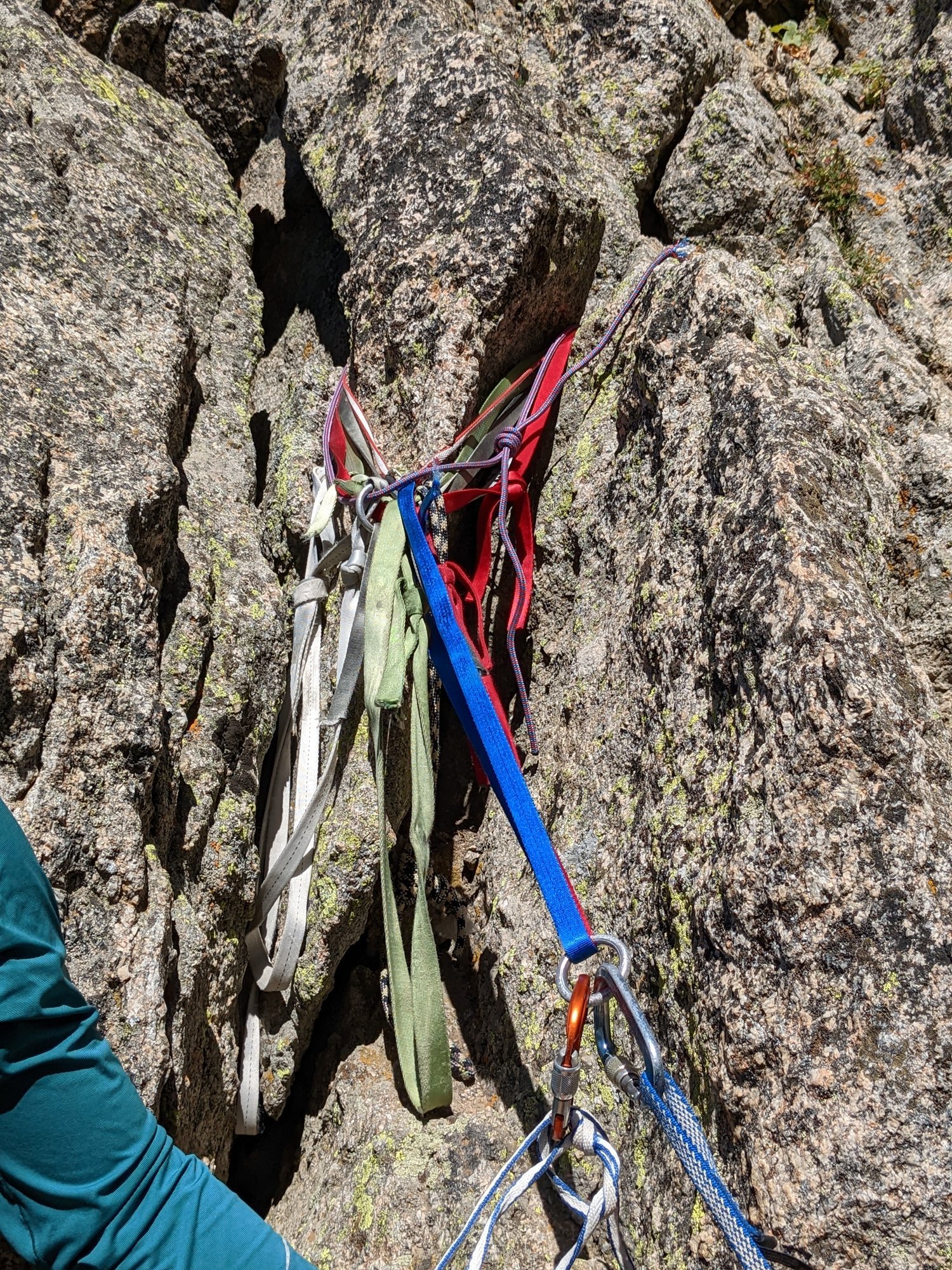Front Range climbers, you may have heard or read varying opinions about fixed anchors in Wilderness areas and be wondering what are the facts.
The BCC put together these frequently asked questions to provide climbers with the information they need to understand the importance and legacy of fixed anchors in Wilderness areas.
The Black Canyon is one of 43 Wilderness areas in Colorado.
A new management plan identifies bolts as “installations”—changing how climbers can use the park.
What is a fixed anchor?
The National Park Service (NPS) defines a fixed anchor “as any piece of climbing equipment that is left in place to facilitate a safe ascent or rappel. Examples include, but are not limited to, bolts, pitons, and slings.”
Permits are almost always needed to install a fixed anchor.
Power drills cannot be used to install bolts as fixed anchors in Wilderness–hand drills must be used.
What is “Wilderness”?
These are areas designated by land managers, NPS and United States Forest Service (USFS), as places to be preserved for their immaculate characteristics—our cathedrals in nature.
These are our most pristine places—“places where nature calls the shots.” USFS
What is the Wilderness Act and what does it say?
It is a 1964 Act of Congress that created a permanent preservation system for Wilderness areas for “the permanent good of the whole people.”
Where can climbers find Wilderness areas in Colorado?
Mount Evans
Rocky Mountain National Park
Black Canyon of the Gunnison
10 of 43 Colorado Wilderness areas are in the Arapaho Roosevelt National Forest (Backyard for the Front Range)
Where can climbers find Wilderness areas nationwide?
Joshua Tree
Yosemite
North Cascades
Rocky Mountain National Park is one of the historic locations that has allowed fixed anchors for the past 100+ years
What is the history of fixed anchors in Wilderness?
Bolts and pitons have been historically allowed in Wilderness.
Precedent: Pitons existed in Wilderness climbing areas before the Wilderness Act.
What is the fuss about installations?
The Wilderness Act explicitly bans “installations.”
Fixed anchors have not historically been considered “installations.”
Federal agencies have recently changed their stance and proposed that fixed anchors are “installations” after all, and therefore illegal.
What are the environmental benefits of bolts as fixed anchors?
Much like wooden footbridges used to guide traffic through a pristine meadow in Wilderness areas, bolted anchors used for rappelling facilitate climbers descending without adding erosion and soil degradation via social trails. Routes with “walk-offs” often create unsustainable degraded trails.
Bolts, unlike tangles of tattered webbing, preserve Wilderness aesthetics.
A tat anchor on Wolfs Head in the Wind River Range that failed, resulting in significant injuries. In 2022 there were three fatalities from tat anchors failing.
What is current legislation trying to achieve regarding bolts in Wilderness?
Maintain the status quo.
Protect America’s Rock Climbing (PARC) Act, and America’s Outdoor Recreation Act (AORA) are two Acts of Congress trying to codify the precedent for allowing bolts in Wilderness.
PARC is a bill in the House of Representatives supported by Boulder Congressperson Joe Neguse.
AORA has an amendment that supports bolts in Wilderness, maintenance of bolts in Wilderness, and climbing in Wilderness areas in national parks.
Why do fixed anchors in Wilderness matter?
Climbing is one of the best ways to experience the solitude and expansiveness of Wilderness areas. For over 150 years climbers have judiciously placed fixed anchors – first pitons, and now bolts – in Wilderness areas to safely climb and return from climbing objectives. Some of the first technical climbs in the United States only happened because of the ability to place fixed anchors.
Climbers need the status quo, fixed anchors allowed in Wilderness, to safely continue to climb in Wilderness areas.
Want to Take Deep Dive into Bolts in Wilderness? Here are some additional resources:
Local Land Manager Rules on Bolts and Fixed Anchors:
Each land manager: Bureau of Land Management (BLM), United States Forest Service (USFS), County of Boulder Open Space (BCPOS), City of Boulder Open Space (OSMP), Jefferson County, Colorado State Parks, National Parks, and others all have their policies on fixed-anchors and bolts.




